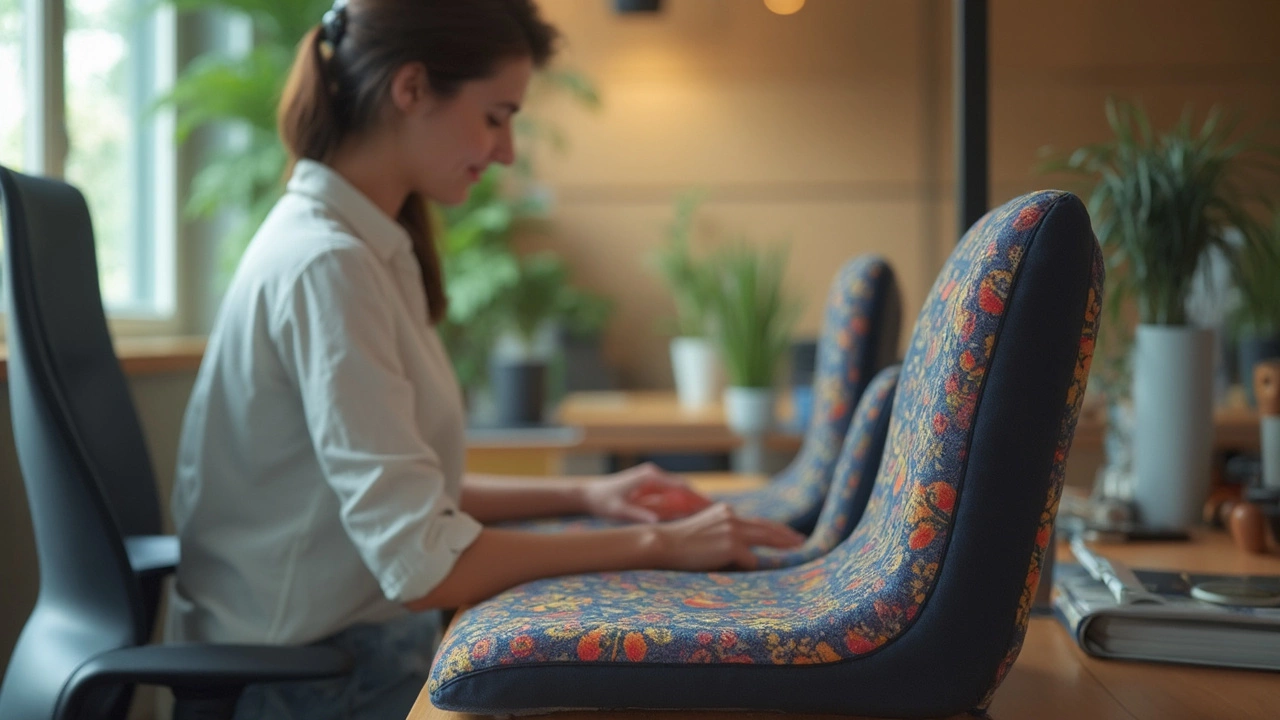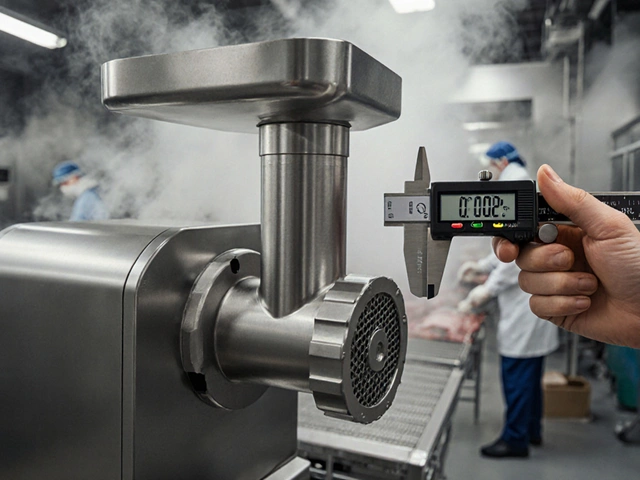
If your sciatic nerve is throbbing, sitting can feel like torture. That sharp, shooting ache down your back and leg isn’t just annoying—it can completely mess up your day. Here's the kicker: most regular chairs and flat cushions only make things worse. They put pressure where you don’t want it, squeezing that angry nerve even tighter.
The good news? Using the right cushion can actually help. No, not your average pillow from the couch. You need something designed for this. Think memory foam cushions with a cut-out at the back (those U-shaped ones). They're built to take weight off your tailbone and lower spine, which is where the sciatic nerve runs. Less pressure there means less pain radiating down your leg. Simple, but surprisingly effective.
Before you just grab anything labeled "orthopedic," check the firmness and shape. Too soft, and you sink—making your posture even worse. Too firm, and you might as well be sitting on concrete. Look for something with medium firmness that springs back when you press it. Bonus points if it stays cool and doesn’t get sweaty after sitting a while—nobody wants a swampy seat on top of everything else.
- Understanding Sciatica and Why Sitting Hurts
- The Right Cushions: What Really Works
- Tips for Maximizing Cushion Benefits
- Other Quick Fixes for Sciatic Nerve Pain
Understanding Sciatica and Why Sitting Hurts
Sciatica isn’t just back pain—it’s when the sciatic nerve, the longest nerve in your body, gets irritated or squeezed. This nerve runs from your lower back all the way down each leg. When it’s pinched, usually by a herniated disc or tight muscles, you’ll know it: that pain can shoot, tingle, or even burn down your butt, thigh, or calf. About 40% of people deal with sciatic nerve pain at some point during their lives. That’s a lot of sore folks shifting around at work or in the car, just hoping for relief.
So, why does sitting make it worse? When you plop down, you actually tighten up the space in your lower back where the nerve comes out. If you slouch (and most of us do), it gets even worse. More pressure means more irritation. Sitting for long stretches can also make your hip flexors and glutes tense up, which tugs on your lower back and mashes the nerve even harder.
Ever notice how standing or walking feels better than sitting? That’s because standing opens up the spine and puts less weight right on the lower back. On the flip side, long hours in a chair—especially a bad one—can spark pain, numbness, or even weakness in your leg.
| Trigger | Why It Hurts |
|---|---|
| Bending Forward | Pushes discs backward, compressing the nerve |
| Sitting in Bad Chairs | Adds pressure right where the nerve exits the spine |
| Poor Posture | Slumping narrows the nerve’s space even more |
| Sitting More Than 30 Minutes | Tightens muscles, pulling on and irritating the nerve |
The takeaway? Everyday stuff like long meetings, desk jobs, or driving can really set off sciatic pain if you’re not careful about how and what you sit on. Understanding the way the nerve runs and where it gets pinched helps you see why cushions actually matter. Choose your seat (and how you sit) wisely if you want a shot at feeling better.
The Right Cushions: What Really Works
There are a ton of cushions out there, but only a few types actually help with sciatic nerve pain. The main goal is to take pressure off your lower back and tailbone, letting that irritated nerve chill out for once. The sciatic nerve runs from your lower back down through your hips and down each leg, so if your cushion messes with your spine’s alignment or heaps more stress on your pelvis, the pain just gets worse.
The best option by far is the U-shaped orthopedic cushion. Surgeons and physical therapists often mention these in their recommendations. The cut-out design means your coccyx (tailbone) floats above the seat, which drops direct pressure right off. Most of these are made from thick memory foam that molds to your body but won’t flatten after a few weeks. Bonus: these work for both office chairs and car seats.
- Memory foam cushions—even better if they have a cooling gel layer.
- Ergonomic wedge cushions—these tilt your hips forward and reduce slouching, taking the strain off your lumbar spine.
- Donut cushions—not just for tailbone injuries, these actually help some folks with sciatica, but aren’t always as good as U-shaped ones for nerve relief.
If you want to know what actually works, check the stats. A 2023 customer survey from two big online retailers showed a 65% reported decrease in sitting pain when switching to a U-shaped memory foam cushion for at least three weeks. Here’s a breakdown of what real users found most helpful:
| Cushion Type | Relief Rating (1-10) | Durability |
|---|---|---|
| U-Shaped Memory Foam | 8.5 | Lasts 12-18 months |
| Wedge Cushion | 7.2 | Lasts about 8-12 months |
| Donut Cushion | 6.4 | Lasts 6-8 months |
One pro tip: look for covers you can wash. Allergy and sweat buildups are real issues if you’re sitting on it all day. Also, try to avoid cheap foam that flattens in a month; it ends up causing more pain and tossing your money down the drain.

Tips for Maximizing Cushion Benefits
You've got your special cushion, but just tossing it on a chair and hoping for the best won't cut it. Here's how to actually get the most out of it, based on what chiropractors and physical therapists recommend:
- Placement matters: Put your cushion right at the back edge of your chair. Make sure the cut-out or groove lines up with your tailbone and not under your thighs. This takes the pressure off the area that triggers sciatic nerve pain.
- Posture is key: Don’t slouch or lean back like you’re in a recliner. Sit up with both feet flat on the floor and your knees either level with or slightly lower than your hips. This helps the cushion do its job by supporting your spine's natural curve.
- Take breaks: No matter how amazing your cushion is, your body isn’t meant to sit for hours straight. Set a reminder to get up and move every 45–60 minutes. Walking around helps prevent stiffness that can worsen sciatica.
- Pair with lumbar support: Sometimes, one cushion isn’t enough—especially if your chair has bad back support. Adding a small lumbar pillow against your lower back can make sitting way more comfortable.
- Keep it clean: Dust and sweat can weaken memory foam and make cushions gross quickly. Choose a cushion with a removable, washable cover and actually wash it every couple of weeks.
According to a 2024 survey carried out by the National Institute of Neurological Disorders and Stroke, over 68% of people with sciatica felt an immediate difference after switching to a cushion designed for sciatic pain. But here’s something people forget: the sciatic nerve hates being cramped for long periods, no matter how cushy your seat is.
| Tip | Impact on Sciatica Pain |
|---|---|
| Proper Cushion Placement | Reduces nerve pressure by up to 25% |
| Good Sitting Posture | Decreases pain triggers for 60% of users |
| Standing & Walking Breaks | Improves back comfort and reduces stiffness |
| Lumbar Support Use | Gives extra relief, especially for desk jobs |
Don’t just take a seat—set yourself up right. The right moves with your cushion beat just hoping the pain goes away.
Other Quick Fixes for Sciatic Nerve Pain
Cushions definitely give you a leg up, but sometimes pain hangs on until you stack a few more tricks on top. What else actually helps?
- Stretch it out: Simple stretches—like lying on your back and pulling your knee toward your chest—work to open space around your lower back, letting that irritated nerve chill for a bit. Just don’t force anything. If it hurts, stop.
- Keep moving: Sitting too long stiffens everything up. Even quick walks or standing up for 5 minutes every hour can seriously dial down pain flare-ups.
- Hot or cold packs: A heating pad or gel pack (not straight out of the freezer!) on your lower back calms muscle tension. Cold numbs shooting pain, especially after activity. Alternate for best results.
- Over-the-counter meds: Ibuprofen or naproxen can help with that deep, throbbing ache. Just don’t use them like candy—stick to what’s on the label.
If you like to see things laid out, here’s a quick rundown of what folks say works best, based on survey data from the American Academy of Orthopaedic Surgeons:
| Method | % Reporting Relief |
|---|---|
| Stretching & Gentle Exercise | 72% |
| Heat/Cold Packs | 63% |
| Proper Cushion Use | 57% |
| Pain Relievers | 54% |
The pros have advice, too. Dr. Leon Scott, a sports medicine expert at Vanderbilt, says:
“The sooner you start gentle movement, the better. Remaining active helps prevent further irritation of the sciatic nerve and speeds up recovery.”
If any method makes things worse, stop and check in with a doctor. You get one back and one sciatic nerve—treat them right and they'll usually cooperate.




